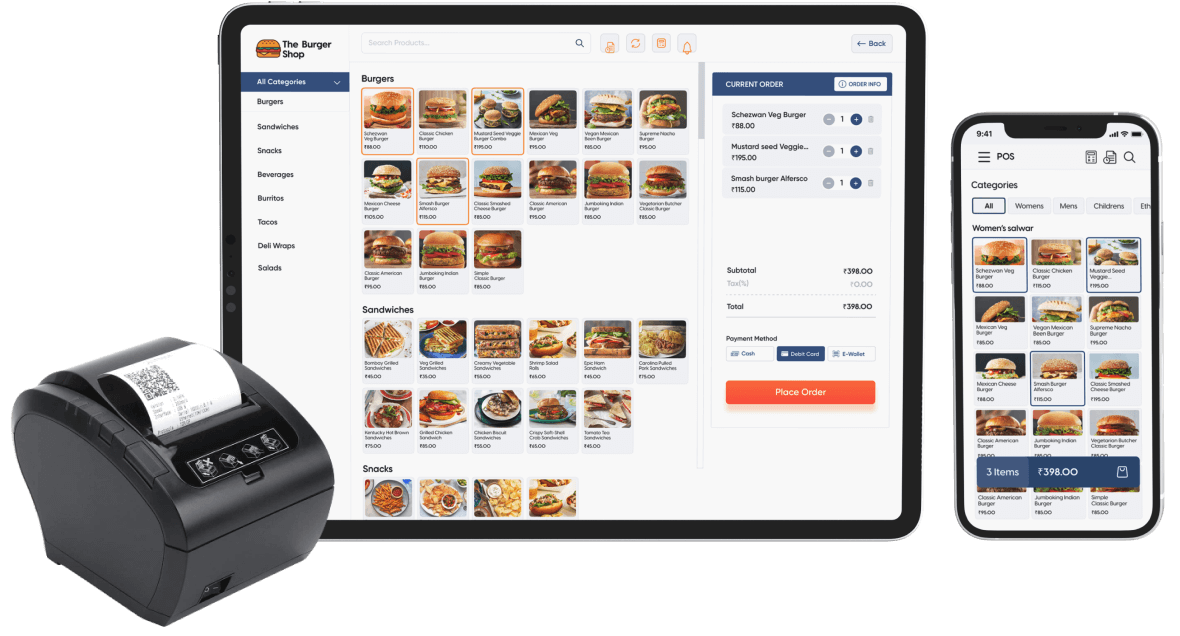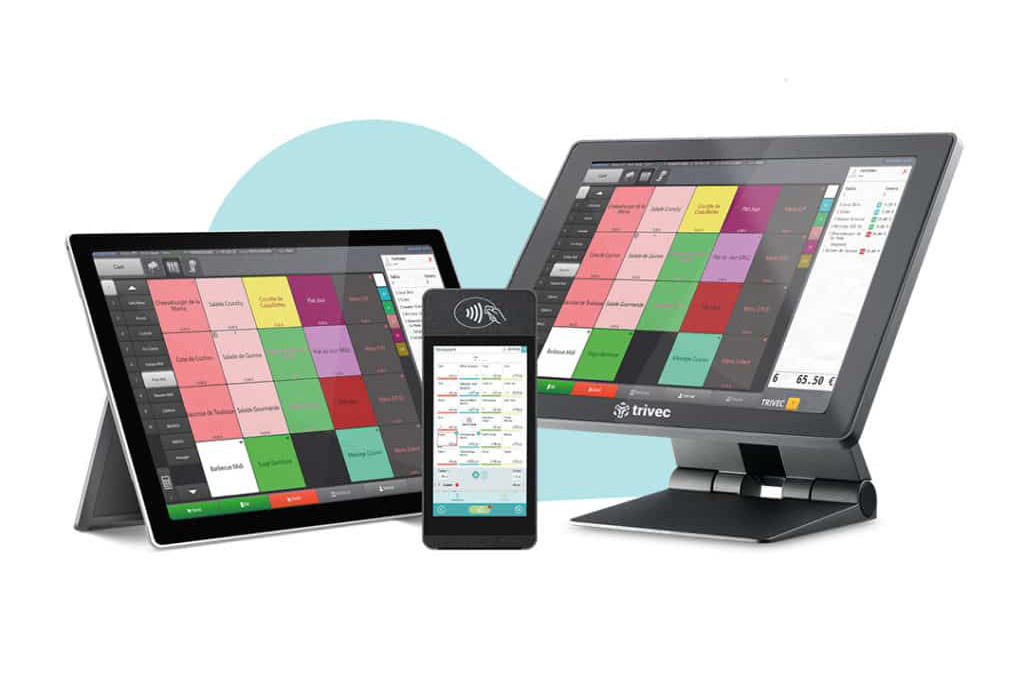Why more restaurants are choosing Restaurant POS Software in modern hospitality
Wiki Article
Exactly How POS System Functions: A Comprehensive Guide for Entrpreneurs
A POS system works as a vital tool for modern businesses, integrating numerous components to simplify procedures. It includes equipment like barcode scanners and software program available for sale tracking. This system not only processes deals however likewise handles supply and evaluates customer actions. Comprehending its performance can significantly affect a business's efficiency and decision-making. What are the crucial components that add to this performance? Exploring these parts provides useful understandings.Comprehending the Parts of a POS System
A Point of Sale (POS) system is composed of numerous essential components that interact to promote transactions and take care of company operations. At its core, the hardware consists of devices such as a sales register, barcode scanner, invoice printer, and payment incurable, all crucial for refining sales (Restaurant POS Software). The software program component takes care of supply, sales monitoring, and consumer information, supplying important understandings for company decisions.Additionally, databases store transaction documents and customer info, making certain information stability and security. Network connection makes it possible for real-time updates and access to cloud-based services, enhancing functional performance. User interfaces, made for convenience of usage, allow personnel to navigate the system rapidly, decreasing training time. Together, these elements produce a natural system that simplifies the sales process, boosts customer support, and aids in effective management of organization resources. Comprehending these components is important for service owners looking for to enhance their POS systemsExactly How Sales Transactions Are Refined
When a consumer chooses to make an acquisition, the sales purchase initiates a collection of organized actions within the POS system. Initially, the cashier inputs the things being bought, which are scanned through a barcode visitor or by hand gone into. This action retrieves product information, including rates and suitable tax obligations, from the system's database.Next, the customer exists with the overall quantity due. The POS system then processes the settlement, whether via cash, bank card, or mobile payment techniques. For digital settlements, the POS firmly connects with payment cpus to accredit and verify the transaction.Once the payment is confirmed, the system produces a receipt, which can be published or sent out digitally. This invoice functions as proof of acquisition for the consumer. The purchase information is videotaped in the system, making certain precise sales records and monetary monitoring for the service.Inventory Monitoring and Monitoring
Reliable inventory administration and tracking are vital components of a POS system, as they ensure that organizations keep perfect stock degrees and lessen discrepancies. A robust POS system enables real-time supply updates, mirroring sales and returns instantly. This makes it possible for service owners to check supply levels precisely, making certain that prominent things are conveniently offered while protecting against overstocking of less preferred products.Additionally, progressed POS systems supply attributes such as computerized supply alerts and reorder ideas, enhancing the procurement process. Barcoding and RFID innovation enhance accuracy in tracking inventory activity, reducing human error. Extensive reporting devices provide understandings into supply turnover rates, assisting companies make notified decisions about acquiring and item offerings. Ultimately, efficient supply monitoring with a POS system not only improves functional effectiveness but also boosts customer fulfillment by ensuring product schedule.
Evaluating Customer Data and Insights
Customer data evaluation serves as a powerful tool for businesses utilizing a POS system. By accumulating and examining transaction information, businesses can uncover important insights concerning customer habits and choices. This evaluation allows them to identify acquiring trends, peak shopping times, and popular items, therefore informing inventory decisions and advertising and marketing strategies.Additionally, organizations can segment their consumer base, enabling personalized advertising efforts that provide to details demographics or buying routines. Understanding customer loyalty patterns also aids in establishing targeted promotions and incentives programs.The data gleaned from a POS system can likewise disclose understandings into client responses, enabling organizations to make enlightened decisions concerning product special info offerings and service enhancements. Inevitably, leveraging consumer data efficiently can enhance the general purchasing experience, foster consumer fulfillment, and drive profits growth.
Advantages of Applying a POS System
Implementing a POS system offers countless advantages that can significantly boost business procedures. To begin with, it enhances deal processes, minimizing delay times and enhancing client complete satisfaction. By automating sales procedures, companies can decrease human error and warranty exact record-keeping. In addition, a POS system supplies valuable information analytics, allowing proprietors to track sales trends and inventory levels in real-time. This understanding sustains informed decision-making, assisting to enhance supply monitoring article and marketing strategies.Moreover, numerous POS systems integrate with various other company tools, such as accountancy software program, streamlining monetary administration. Improved worker management attributes, such as tracking hours and efficiency, further add to functional efficiency.Lastly, the implementation of a POS system can bring about increased profits via enhanced client experiences and strategic understandings, inevitably promoting business growth and sustainability.
Often Asked Questions
What Sorts Of Services Can Gain From a POS System?

Just how Much Does a POS System Normally Cost?
The cost of a POS system typically ranges from a few hundred to a number of thousand dollars, depending upon attributes, equipment, and software application - Restaurant POS Software. Businesses need to consider recurring charges for maintenance, support, and transaction handling when budgeting
Can I Integrate a POS System With Existing Software?
Integrating a POS system with existing software is often possible. Lots of systems provide APIs or integrated compatibility attributes, enabling services to enhance procedures and boost functionality by linking different software application applications effectively.What Training Is Required for Team to Use a POS System?
Educating for team to use a POS system commonly consists go to this site of understanding software program capabilities, refining transactions, managing stock, and dealing with consumer interactions - Restaurant POS Software. Practical demonstrations and hands-on practice enhance effectiveness and self-confidence in using the system successfullyWhat Occurs if the Web Decreases While Utilizing a POS System?
If the internet decreases during POS system use, transactions may be disrupted. Lots of systems use offline capacities, allowing basic operations to proceed, yet full functionality, including real-time stock updates, will certainly be restricted.Report this wiki page